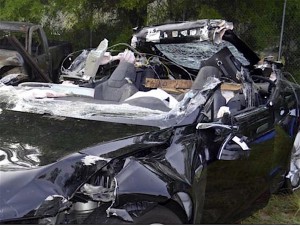The Obama Administration, which has played an active role in the car business since taking office, is releasing a new policy initiative to promote the development of automated vehicles in hopes of making American roads and highways safer and more efficient.
The U.S. Department of Transportation’s new Automated Vehicle Policy was devised to insure that automated vehicles or vehicles that can take over some or all of the driving task can pass a series of uniform tests to ensure the safety of the public, according to information supplied by The White House.
“Realizing the full potential of automated vehicles requires Americans to be confident that they will be safe – and the federal government has a critical responsibility on that front,” a White House briefing paper circulated prior to the official announcement noted.
Automated vehicles are being touted as way to cut down on the carnage on the U.S. highways that still claim more than 33,000 deaths and an estimated 2 million injuries. Helping prevent the vast majority of car crashes could save thousands of lives. They also could increase the mobility for millions of the elderly and those with disabilities.
Traffic fatality rates have risen in the last 18 months. Through the first six months of this year, estimates show a 9% jump in motor vehicle deaths, according the National Safety Council.
The upward trend began in late 2014 and despite the introduction of stronger, safer vehicles laden with more safety technology than ever, it appears to show no sign of decreasing. Last winter, the NSC issued its largest year-over-year percentage increase in 50 years, when it estimated fatalities had jumped 8% in 2015 compared to 2014.
(Death toll on U.S. roads continues to rise. For more, Click Here.)
Reducing the cost of transportation for families, communities, and businesses, while giving working people back hours spent driving every day, experts both in government and in private industry have suggested. Improving the efficiency of vehicles and reducing road congestion, which will decrease carbon emissions, the administration noted.
As part of the policy, the administration plans to offer what it describes as “vehicle performance” for manufacturers, developers, and other organizations outlining a 15-point “Safety Assessment” for the safe design, development, testing and deployment of highly automated vehicles, including a request that automakers sign and submit this safety assessment to certify that their vehicles are ready for public roads.
(Click Here for details about U.S. drivers rolling up record miles.)
It also includes a “model” policy that can be adopted by states that provides a clear distinction between federal and state responsibilities and recommends policy areas for states to consider with a goal of generating a “consistent national framework for the testing and operation of automated vehicles while leaving room for learning and state discretion.”
The National Highway Traffic Safety Administration will use its regulatory authority for the safe development of automated vehicles, such as interpreting current rules to allow for appropriate flexibility in design, providing limited exemptions to allow for testing of nontraditional vehicle designs and ensuring that unsafe automated vehicles are removed from the road.
(U.S. highway fatalities surge 8% in 2015. Click Here for the story.)
Under the new policy, NHTSA also could aid the safe deployment of new lifesaving technologies. For example, NHTSA is seeking public feedback on whether to consider pre-approving novel automated vehicle technologies before they are allowed on public roads and whether to create a new Federal safety standard for innovative vehicle designs.


